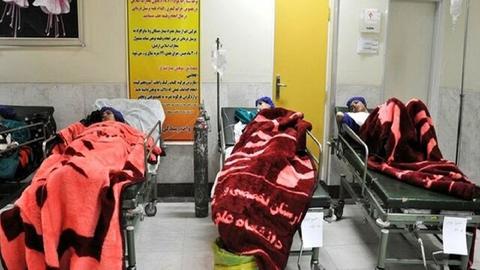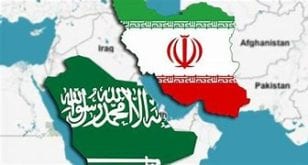Al-Monitor — Several Iranian cities were rocked once again this week by a new wave of what has been called mysterious poisoning of mostly schoolgirls.
The new wave of gas attacks followed a brief respite during Iranian new year holidays, for which schools are closed for two weeks starting from late March.
The cities targeted, according to opposition outlets and some state media sources, included the capital Tehran, Karaj, Saghez, Sanandaj, Kermanshah, Urmia, Oshnavieh, Shahinshahr, Tabriz, Khoy and Amol.
The Islamic Republic’s attack with chemical gas on Farzanegan 1 girls’ school in Sanandaj, Kurdistan. April 10, 2023.pic.twitter.com/n7QN6JL37c— 1500tasvir_en (@1500tasvir_en) April 10, 2023
Among them, the hardest-hit appeared to be Saghez, the hometown of 22-year-old Mahsa Amini, whose death in custody of Iran’s controversial morality police in September sparked an anti-government uprising centered on women’s rights and civil freedoms, with protesters mostly calling for the downfall of the ruling theocracy.
In response to the new wave in Saghez, the city went on a state of widespread strikes on Tuesday against “the organized chemical attacks,” according to the Oslo-based Kurdish rights monitor Hengaw, while parents also kept their children away from schools over safety fears.
Elsewhere, videos from Amol showed parents furiously arguing with officials, including a cleric, in the local Education Department.
Yet Iranian officials adhered to the explanations they have been giving out since December. Deputy Interior Minister Majid Mir-Ahmadi — a general with the Islamic Revolutionary Guard Corps — blamed the incidents on the students. “There have been a very limited number of cases,” he said in comments published by the hardline Mehr News Agency on Monday. “Some students played victim or acted with mischief for the purpose of causing closure of their classes.”
Over the past four months, as many as 13,000 students have been exposed to the suspicious attacks. In the face of mounting public anger, President Ebrahim Raisi directed the intelligence apparatus and other institutions to launch an investigation, the results of which remain unknown.
A separate probe by a fact-finding committee comprising some members of parliament has also been underway. One of those lawmakers, Mohammad Hossein Asafari, told the ISNA News Agency on Monday that intelligence organizations remain clueless as to the roots of the problem. He noted that those arrested in February and March were not the prime suspects.
Along the same lines, in a lengthy article on Tuesday, the pro-reform Etemad daily criticized the authorities for their failure to produce a comprehensive report on the incidents.
The failure to adequately address the issue appeared to have only added to the already existing public frustration, fueling multiple forms of speculation on social media platforms, with many pointing the finger at the government or at least government-supported hard-liners.
The most common theory among those Iranians appears to be grounded in the idea that through the attacks, the state is bound to scare off schoolgirls or punish them, as they have been at the forefront of the recent uprising, expressing their bold defiance by burning their headscarves as well as portraits of Supreme Leader Ayatollah Ali Khamenei.
 Shabtabnews In this dark night, I have lost my way – Arise from a corner, oh you the star of guidance.
Shabtabnews In this dark night, I have lost my way – Arise from a corner, oh you the star of guidance.



